Have you ever walked into your home and been hit with an offensive odor that just won’t go away? Chances are, your furry friend’ anal glands are to blame. Have you ever wondered how to get rid of anal gland smell?
Dogs have a unique scent that comes from their anal glands, which can leave behind an unpleasant odor on furniture if not properly taken care of. But what exactly is dog anal gland scent?
These glands are located near a dog’s anus and produce a strong-smelling secretion that can be used for marking territory or communicating with other dogs. However, when these glands become impacted or infected, they can release an even stronger scent that is difficult to ignore.
Not only is this scent unpleasant for humans to smell, but it can also signal a health issue in your pet. If left untreated, impacted anal glands can lead to discomfort and even infection in dogs.
That’s why it’s important to stay on top of this issue and take steps to eliminate the odor from your furniture. In this article, we’ll explore different methods for getting rid of dog anal gland scent from furniture so you can enjoy a fresh-smelling home once again.
From basic cleaning techniques to advanced methods like hiring professional services, we’ve got you covered. So let’s get started!
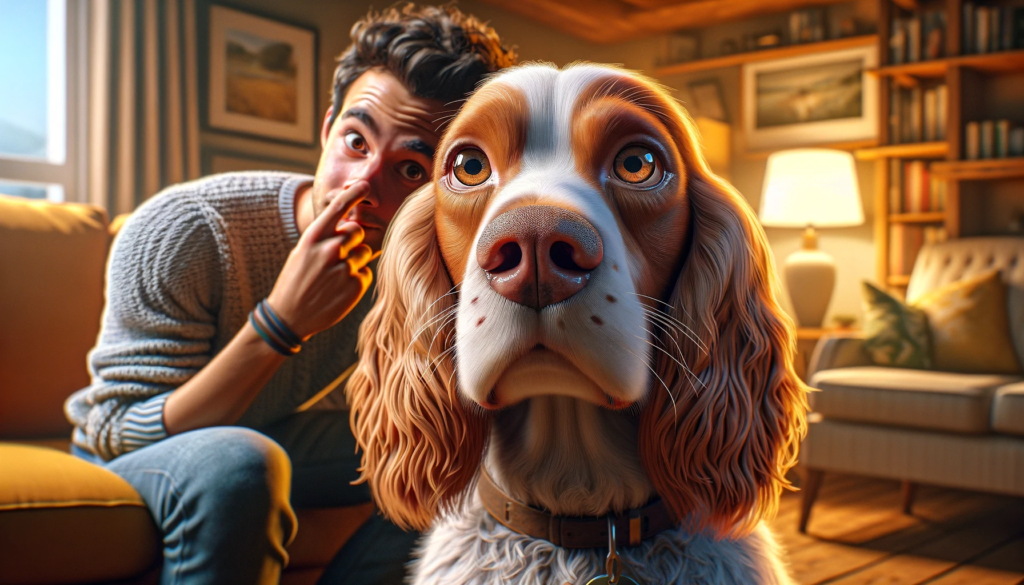
Understanding Dog Anal Gland Scent
Dogs communicate in many ways, and one of them is through their scent glands. One of the most pungent odors that dogs produce comes from their anal glands, located on either side of their rectum. Anal glands contain a potent mixture of chemicals that can range in smell from fishy to musky to downright unpleasant.
What causes this scent and why do dogs produce it?
The anal sacs or glands are small pouches located just inside your dog’s anus. When your dog defecates, the pressure applied by their bowel movements empties these sacs, releasing a mixture of fluid and strong-smelling compounds.
While not much is known about why dogs specifically have anal glands, it’s theorized that they may be used for communication purposes. Dogs will often sniff each other’s behinds to learn more about each other or mark territory with their scent.
The health implications of anal gland issues in dogs
Although anal gland expression happens naturally during bowel movements most times, some dogs experience problems with these sacs becoming clogged or infected. Symptoms of an impacted or abscessed anal gland include scooting on the carpet or ground, licking or biting at the area around the anus, and a particularly foul-smelling odor emanating from the dog’s behind.
If left untreated, an impacted or infected anal gland can lead to more serious health problems such as abscesses and even ruptures requiring surgery. So if you notice any signs that your dog is having issues with their anal glands, it’s crucial to contact your vet as soon as possible.
Understanding what causes dog anal gland scent and its potential health implications is essential for any pet owner. While it might not be pleasant to deal with when it comes to cleaning up furniture odors left by this scent, addressing any underlying health issues should always be the first step.
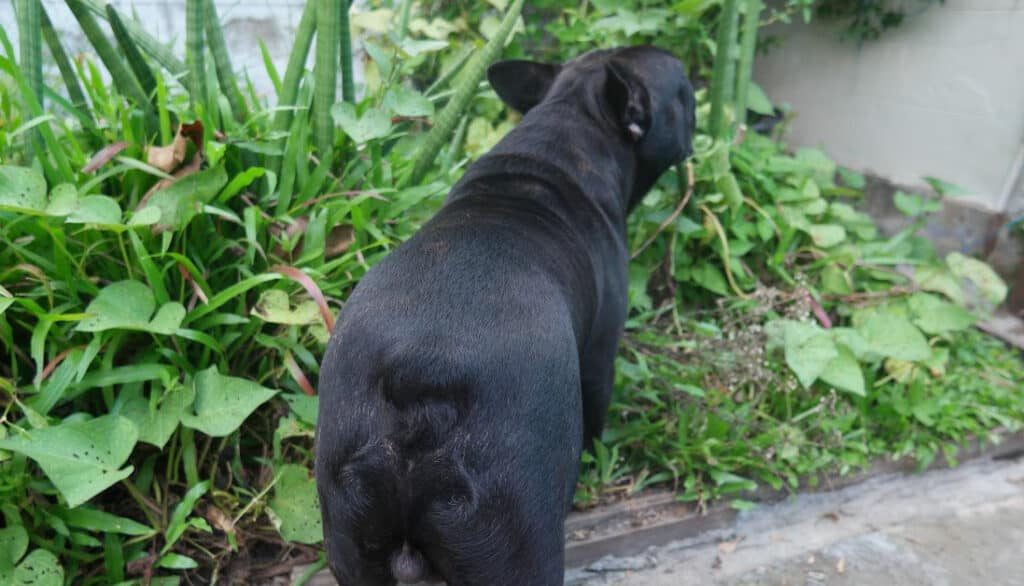
Identifying Dog Anal Gland Scent on Furniture
If you have a pet dog, chances are that you’ve encountered the distinct smell of anal gland secretions. Your furry friend’s anal glands produce a pungent odor that can linger on furniture and carpets if not addressed promptly. It’s important to recognize this scent in order to take action before it becomes a bigger problem.
One way to identify dog anal gland scent on furniture is through your sense of smell. The scent is often described as fishy or musky, and it can be quite strong.
The odor may be more noticeable in certain areas of your home, such as where your dog likes to lounge or sleep. Additionally, you may notice greasy spots or stains on furniture where your dog has been sitting.
This is due to the anal gland secretions staining the material they come into contact with. These stains are often difficult to remove and may require more intensive cleaning methods.
It’s also worth noting that dogs may try to mark their territory by rubbing their behinds against furniture or other surfaces. This behavior can leave behind a strong scent even if the anal glands weren’t actually expressed.
Why it can be challenging to remove
Removing dog anal gland scent from furniture can be challenging for several reasons. First, the odor tends to penetrate deeply into fabrics and materials, making it difficult to eliminate with basic cleaning methods like wiping down surfaces. Moreover, many cleaning products aren’t effective at neutralizing this particular scent.
Some air fresheners merely mask the odor without addressing its source. Another challenge is that dogs tend to return repeatedly to areas where they have previously marked their territory with their anal glands.
This means that even if you manage to eliminate the current odor from your furniture, there’s a chance that it will return unless you address any underlying behavioral issues. In short, removing dog anal gland scent from furniture requires a combination of cleaning techniques and preventative measures to break the cycle of odor buildup.
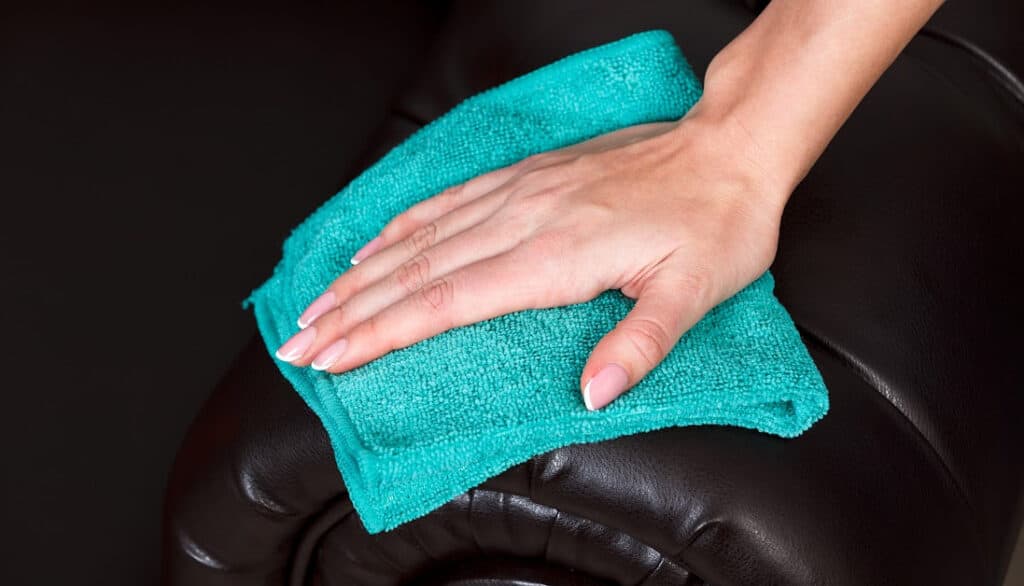
The importance of addressing dog anal gland scent on furniture
It’s important to address dog anal gland scent on furniture not only for your own comfort but also for the health and wellbeing of your pet. Lingering odors can be a sign of underlying medical issues that need attention, such as impacted anal glands or an infection.
In addition, allowing your dog to continue marking their territory on furniture can reinforce bad habits and lead to more persistent odor problems down the line. By addressing the problem promptly, you can help prevent further damage to your furniture and maintain a clean, healthy home for you and your furry friend.
Tips for Getting Rid of Dog Anal Gland Scent from Furniture
Basic Cleaning Techniques
When it comes to getting rid of dog anal gland scent, the first step is always to clean the affected area thoroughly. There are two basic cleaning techniques that you can use: vacuuming and spot cleaning.
Vacuuming: How to use a vacuum cleaner effectively
Vacuuming is an effective way to remove surface dirt, dust, and hair from furniture. To use a vacuum cleaner effectively, start by removing any loose dirt or debris using a soft-bristled brush attachment. Next, switch to the upholstery attachment and work your way over the entire piece of furniture.
Be sure to pay special attention to the area where your pet usually sits or sleeps. Use slow and deliberate strokes with the attachment, moving back and forth until you have covered every inch of the surface.
Spot Cleaning: Using baking soda, vinegar or enzymatic cleaners
If there are specific spots on your furniture that have been affected by dog anal gland scent, you can spot clean them using baking soda, vinegar or enzymatic cleaners. Baking soda is great for absorbing odors.
Sprinkle a generous amount onto the affected area and let it sit for several hours before vacuuming it up. Vinegar is also effective at neutralizing odors.
Mix one part vinegar with one part water in a spray bottle and apply it directly onto the affected area. Let it sit for several minutes before wiping it away with a clean cloth.
Enzymatic cleaners contain special enzymes that break down organic matter like urine or feces. Apply them directly onto the affected area according to package instructions.
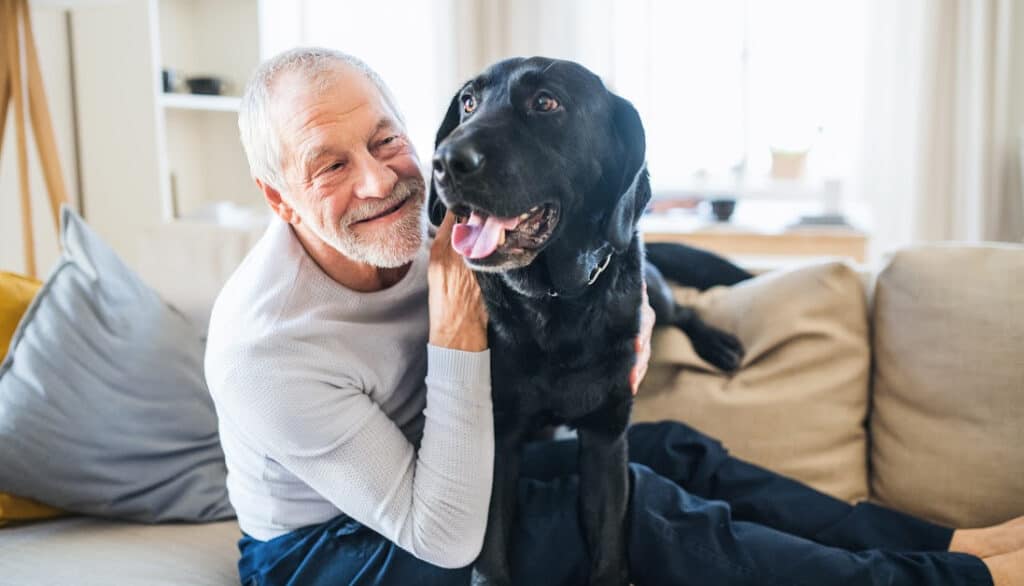
Advanced Cleaning Techniques
If basic cleaning techniques aren’t enough to get rid of dog anal gland scent from your furniture, there are more advanced techniques that you can try.
Deep cleaning with steam cleaners
Steam cleaners are great for deep cleaning furniture. They use high-pressure steam to remove dirt and grime from the surface of upholstery, as well as penetrate deeper into the fabric to remove odors.
To use a steam cleaner, fill it with water according to the manufacturer’s instructions and turn it on. Once it has heated up, use the upholstery attachment to clean your furniture thoroughly.
Hiring professional cleaning services
If you’ve tried everything else and still can’t get rid of dog anal gland scent from your furniture, consider hiring a professional cleaning service. They have specialized equipment and experience in dealing with tough pet-related odors. Be sure to choose a reputable company that uses safe and eco-friendly products.

Preventative Measures
The best way to deal with dog anal gland scent is to prevent it from getting onto your furniture in the first place. Here are some preventative measures you can take:
Covering furniture with slipcovers or blankets
Covering your furniture with slipcovers or blankets can help protect them from pet-related odors. Choose washable fabrics that are easy to clean.
Regularly washing pet bedding and other items that come into contact with your dog’s anal glands
Regularly washing pet bedding, clothing, toys, and other items that come into contact with your dog’s anal glands is essential for keeping them clean and odor-free. Use a mild detergent and hot water to kill any bacteria or germs that might be present. Getting rid of dog anal gland scent from furniture requires thorough cleaning techniques like vacuuming, spot cleaning using baking soda or vinegar, advanced methods like deep-cleaning using steam cleaners or professional cleaning services depending on how tough the smell is; finally one has to adopt preventative measures like covering furniture with slipcovers or blankets and regularly washing pet bedding, clothing, toys, and other items that come into contact with your dog’s anal glands.
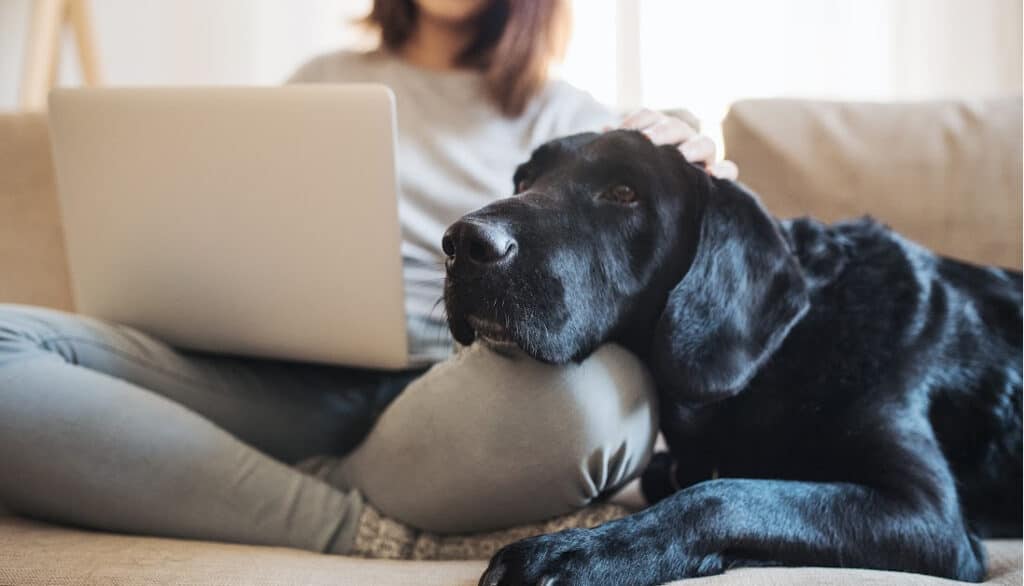
Conclusion: Stop the Smell!
Now that you know what dog anal gland scent is, why it’s important to get rid of it, and how to do so, you can finally eliminate this unpleasant odor from your furniture once and for all. Remember, anal gland issues in dogs are more than just a smelly inconvenience. They can lead to serious health problems if left unchecked.
Regularly expressing your dog’s anal glands or having them done by a professional can help prevent issues from arising in the first place. If you do notice an odor on your furniture, don’t wait to take action.
The longer you let it linger, the harder it will be to remove. Basic cleaning techniques like vacuuming and spot cleaning are good first steps.
But if those methods don’t work, consider more advanced options like deep cleaning with a steam cleaner or hiring professional cleaning services. Don’t forget preventative measures like covering furniture with slipcovers or blankets and regularly washing pet bedding and other items that come into contact with your dog’s anal glands.
These steps can go a long way in keeping your home smelling fresh and clean. Addressing dog anal gland scent on furniture is an important task for any pet owner.
By taking proactive measures to prevent issues and using effective cleaning techniques when necessary, you can keep your home smelling fresh and avoid potential health problems for your furry friend. So don’t let the smell get the best of you – take action today!
~ Lindsie
